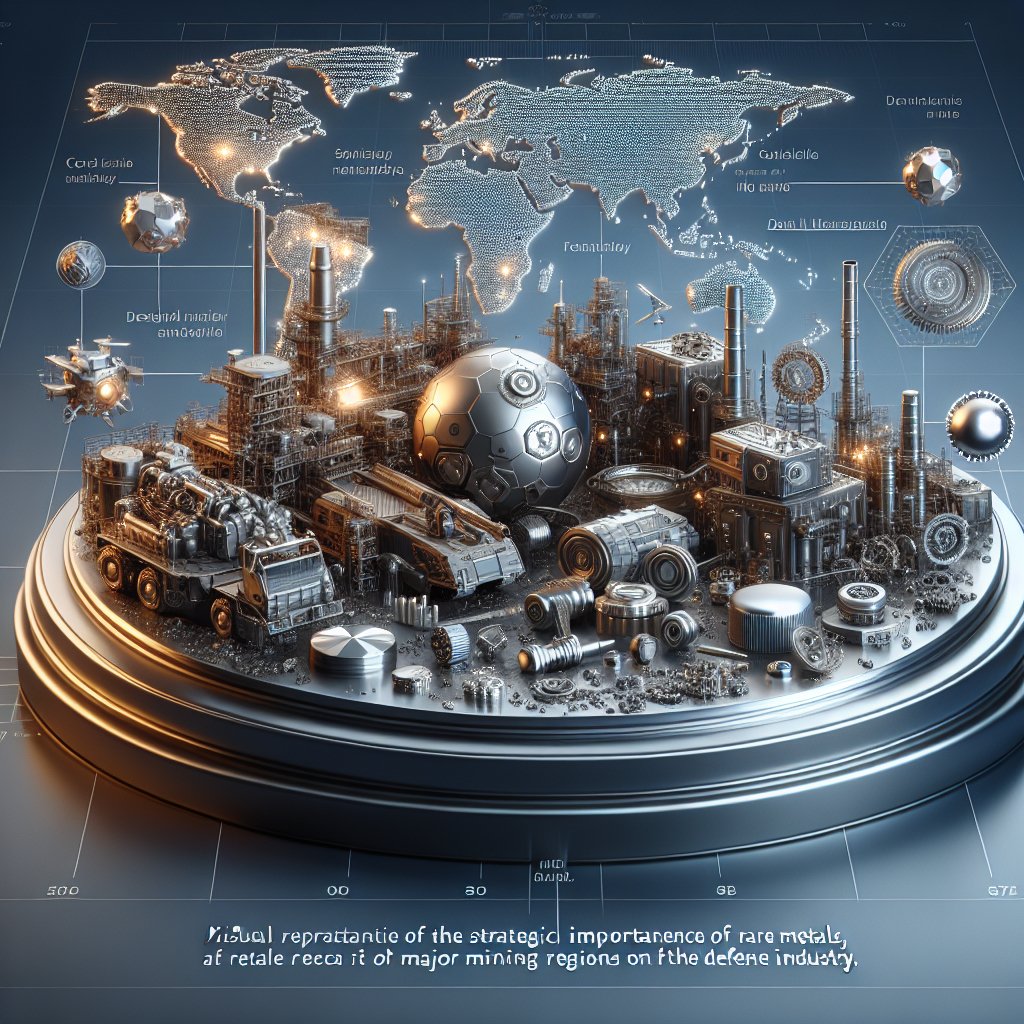The strategic importance of rare metals in the defense industry cannot be overstated. These metals, often referred to as critical or strategic minerals, play a pivotal role in the development and production of advanced military technologies. As global tensions rise and technological advancements accelerate, the demand for these rare metals continues to grow, making them a focal point for national security and economic stability.
The Role of Rare Metals in Modern Military Technology
Rare metals are integral to the development of cutting-edge military technologies. These elements, which include rare earth elements (REEs) like neodymium, dysprosium, and terbium, as well as other critical metals such as tungsten, tantalum, and lithium, are essential for manufacturing a wide range of defense systems. From advanced fighter jets and precision-guided munitions to sophisticated radar systems and secure communication devices, rare metals are the backbone of modern military capabilities.
One of the most significant applications of rare metals in the defense sector is in the production of high-performance magnets. Neodymium-iron-boron (NdFeB) magnets, for instance, are crucial components in the motors of electric vehicles, drones, and other military equipment. These magnets offer superior strength and efficiency, enabling the development of lighter and more powerful systems. Similarly, dysprosium is used to enhance the thermal stability of these magnets, ensuring their performance in extreme conditions.
In addition to magnets, rare metals are also vital in the production of advanced alloys and coatings. Tungsten, known for its high melting point and density, is used in armor-piercing projectiles and kinetic energy penetrators. Tantalum, with its excellent corrosion resistance and high melting point, is used in the production of capacitors and high-temperature alloys for jet engines. These materials provide the durability and performance required for modern military applications.
Global Supply Chains and Geopolitical Implications
The global supply chain for rare metals is complex and fraught with geopolitical challenges. A significant portion of the world’s rare metal production is concentrated in a few countries, with China being the dominant player in the rare earth market. This concentration of supply poses a strategic risk for countries that rely heavily on these materials for their defense industries.
China’s control over the rare earth market has led to concerns about supply chain vulnerabilities and the potential for supply disruptions. In recent years, geopolitical tensions have heightened these concerns, prompting countries to seek alternative sources and develop domestic production capabilities. The United States, for example, has identified rare earth elements as critical to national security and has implemented policies to encourage domestic mining and processing.
Efforts to diversify supply chains have also led to increased exploration and investment in rare metal resources in other regions, such as Australia, Canada, and Africa. These initiatives aim to reduce dependency on a single source and ensure a stable supply of critical materials for defense applications. However, developing new mining operations and processing facilities is a time-consuming and capital-intensive process, requiring significant investment and regulatory support.
Future Trends and Technological Innovations
As the demand for rare metals continues to grow, the defense industry is exploring new technologies and innovations to optimize their use and reduce dependency on scarce resources. One promising area of research is the development of recycling technologies for rare metals. By recovering and reusing materials from end-of-life products, the industry can reduce the need for new mining operations and minimize environmental impact.
Advancements in material science are also paving the way for the development of alternative materials that can replace or reduce the use of rare metals in certain applications. For example, researchers are exploring the use of nanomaterials and composites to create high-performance materials with reduced reliance on critical metals. These innovations have the potential to enhance the sustainability and resilience of the defense supply chain.
Furthermore, the integration of artificial intelligence and machine learning in the design and manufacturing processes is expected to optimize the use of rare metals. By leveraging data analytics and predictive modeling, the defense industry can improve material efficiency, reduce waste, and enhance the performance of military systems.
In conclusion, the strategic importance of rare metals in the defense industry is undeniable. As global demand for these critical materials continues to rise, addressing supply chain vulnerabilities and investing in technological innovations will be essential to maintaining military superiority and ensuring national security. The future of defense technology will depend on the ability to secure a stable supply of rare metals and develop sustainable solutions for their use.












